-
Recent Posts
- Trump’s “Big Beautiful Bill” Is a Grotesque Giveaway to Fossil Fuel Billionaires While Adding $3.3 Trillion to Nation’s Debt
- Senator Chris Murphy Charges that Trump “Has Opened a Channel for Bribery”
- Congressman Casten: Trump’s Assault on the Rule of Law Is Causing Capital Flight Out of U.S. by Foreign Investors
- Trump’s Approval Rating Drops to 80-Year Low; IMF Says U.S. Tariffs Now Exceed the Highs During the Great Depression
- Nasdaq Has Lost More than 3,000 Points Since Trump’s First Full Day in Office in 2025; the Pain Has Barely Begun
- The Bond Crisis Last Week Was a Global No-Confidence Vote in U. S. President Donald Trump
- Trump’s Tariff Plan Guts $5 Trillion in Stock Value in Two Days; Senator Warren Calls for Emergency Action Before Markets Open on Monday
- Trump’s Attacks on Big Law, Universities, and the Media Have a Common Goal: Silence Dissent Against Authoritarian Rule
- Trump Administration Gives All Clear to Laundering Money through Shell Companies and Bribing Foreign Officials
- Four Megabanks on Wall Street Hold $3.2 Trillion in Uninsured Deposits – Which May Explain Senator Schumer’s Pivot to the GOP to Stop a Government Shutdown
- Here’s What Came Crashing Down Yesterday for Trump’s “Genius” Guy, Elon Musk: Tesla Stock, Access to Twitter (X), His Years of Secret Calls with Putin
- After Banning the Associated Press, Trump Is Now Targeting Specific Journalists That He Wants to See Fired
- Closely Watched Atlanta Fed Model Predicts Negative U.S. Growth in First Quarter
- Trump’s Gangster Diplomacy Makes Front Page Headlines Around the Globe
- Who Benefits Alongside Elon Musk If He Succeeds in Killing the CFPB: the Megabanks on Wall Street that Underwrite His Tesla Stock Offerings
- In Trump 1.0, the State Department Used Taxpayer Money to Publish a Book Elevating Elon Musk to a Superhero; It Was Funded by USAID, the Agency Musk Wants to Quickly Shut Down
- News Host Joy Reid Raises Threat of Trump Selling U.S. to Putin; Ten Days Later Her Show Is Cancelled
- Elon Musk’s DOGE Appears to Be Violating a Court Order; It Has Taken Down Hundreds of YouTube Videos that Educate Americans on How to Avoid Being Swindled
- Barron’s Releases Audio of Jamie Dimon Cursing Out His Workers at a Town Hall, as Dimon Plans to Dump Another One Million JPM Shares
- There’s One Federal Investigative Agency that Neither Trump nor Elon Musk Can Touch: It Just Opened an Investigation into DOGE
- Elon Musk’s Companies Were Under Investigation by Five Inspectors General When the Trump Administration Fired Them and Made Musk the Investigator
- Donald Trump Gives the Greenlight to Goldman Sachs and JPMorgan Chase to Return to Bribing Foreign Officials
- After Tech Geeks Built a Back Door to Loot Billions from FTX, Republicans Refuse to Investigate What Elon Musk’s Tech-Squad Did Inside the U.S. Treasury’s Payment System
- Former Prosecutor, Now U.S. Senator, Informs Tesla That CEO Musk May Be Violating Federal Law and to “Preserve All Records”
- Trump’s Hedge Fund Guy Is Now Overseeing the U.S. Treasury, IRS, OCC, U.S. Mint, FinCEN, F-SOC, and the Consumer Financial Protection Bureau
- As Elon Musk Begins Shutting Down Payments to Federal Contractors, a Strange Money Trail Emerges to His Operatives Inside the U.S. Treasury’s Payment System
- JPMorgan Chase Charged by Yet Another Internal Whistleblower with Cooking the Books
- We Asked Google’s AI Search Model, Gemini, Questions About the Fed and Wall Street Megabanks: It Got the Answers Dead Wrong
- With Trump and Melania’s Crypto Coins Likely to Raise Legal Challenges, Why Didn’t Trump Fire the SEC’s Inspector General in His Purge of IGs?
- Fossil Fuel Industry Could End Up Paying Tens of Billions for LA Wildfires and Deceiving the Public on Climate Change for Decades
- It’s Being Called the Biggest Grift by a President in U.S. History: Trump and First Lady Launch their Own Crypto Coins
- Trump Plans to Install a Fracking CEO to Head the Energy Department and Declare a National Emergency on Energy to Gain Vast Powers
- Fossil Fuel Money Played a Role in the Los Angeles Fires and the Push to Install Pete Hegseth as Secretary of Defense
- When It Comes to Wealth Retention in Retirement, Concrete May Be the New Gold
- Wall Street Watchdog Warns “Clock Is Ticking on a Coming Catastrophic Financial Crash”
- Wall Street Is Sending the Same Message to Americans on Fossil Fuel Financing that It Sent on Cigarettes: Drop Dead
- In a Six-Week Span, this Dark Pool with a Curious Past Traded 3.7 Billion Shares
- Wall Street’s Lobby Firm Hired Eugene Scalia of Gibson Dunn to Sue the Fed for Jamie Dimon
- Postmaster General Louis DeJoy Made $561,051 in Compensation in 2024, as Mail Costs Spiked and Delivery Deteriorated
- Fed Chair Jay Powell Sends a Bold Message to Trump and Tanks the Dow by 1123 Points
- The Head of Fixed Income at T. Rowe Price Makes the Scary Case for the 10-Year Treasury to Spike to 6 Percent
- $663 Billion in Cash Assets Have Gone Poof at the Largest U.S. Banks
- Donald Trump to Ring Bell at New York Stock Exchange Today as Hit List Posters Appear in Manhattan Targeting Wall Street CEOs
- Trump Has a Slush Fund to Prop Up the Dollar – Will He Use It to Prop Up Bitcoin Instead?
- A CEO Assassination; a Billionaire Heiress/NYPD Commissioner; a Secret Wall Street Spy Center – Here’s How They’re Connected
- Despite More than 1600 Tech Scientists Signing a Letter Calling Crypto a Sham, Trump Names a Crypto Cheerleader for SEC Chair
- The Fed Rings a Warning Bell: Hedge Funds and Life Insurers Are Reporting Historic Leverage
- Trump’s Nominee for FBI Director, Kash Patel, Has Businesses Financially Intertwined with Trump
- Donald Trump Is at Risk of Getting Named in a Fossil Fuels Conspiracy Lawsuit
- Trump Is Having Difficulty Getting a Lawyer to Accept the Nomination for SEC Chair: Here’s Why
Search Results for: rap sheet
Fed Chair Powell Promises “Transparency,” then Draws the Dark Curtain Tighter

By Pam Martens and Russ Martens: May 22, 2020 ~ During his appearance before the Senate Banking Committee this past Tuesday, Federal Reserve Chairman Jerome Powell told Senator Jon Tester that the Fed “has committed to disclose all of the borrowers and the amounts in a timely way.” Powell was referring to the alphabet soup of emergency bailout programs for Wall Street that the Fed has established under Section 13(3) of the Federal Reserve Act. In a statement released by the Fed on April 23, it also said this on the subject of transparency: “…the Board will report substantial amounts of information on a monthly basis for the liquidity and lending facilities using Coronavirus Aid, Relief, and Economic Security, or CARES, Act funding, including the: Names and details of participants in each facility; Amounts borrowed and interest rate charged…The Board will publish reports on its CARES Act 13(3) facilities on … Continue reading
The Fed’s Chair and Vice Chair Got Rich at Carlyle Group, a Private Equity Fund with a String of Bankruptcies and Job Losses

By Pam Martens and Russ Martens: May 18, 2020 ~ Private equity funds have been variously called “merchants of debt,” “vultures,” or “corporate raiders.” What a private equity fund typically does is to buy up companies by piling debt on the balance sheet, selling off valuable assets like real estate, extracting giant dividends for the private equity partners to the detriment of workers and customers, and then, frequently, letting the company collapse into bankruptcy while laying off thousands of workers or liquidating the whole company. It should give pause to every American that the two top men at the Federal Reserve who are implementing a new $4.54 trillion bailout fund for Wall Street, using $454 billion from taxpayers to absorb the losses, both got rich working for one of the world’s largest such private equity firms: the Carlyle Group. According to his official bio, Fed Chairman Jerome Powell was a … Continue reading
Evidence Suggests U.S. Financial Crisis Started on August 14, 2019
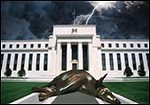
By Pam Martens and Russ Martens: May 14, 2020 ~ In the Federal Reserve’s most recent “Supervision and Regulation Report” on the big bank holding companies it “supervises,” the Fed continued its attempts to perpetuate the narrative that “The banking industry came into 2020 in a healthy financial position” and has simply unraveled as a result of the COVID-19 pandemic. That narrative is built on the same flimsy house of cards that the New York Times and Andrew Ross-Sorkin built the narrative that the mega banks on Wall Street were not responsible for the 2008 financial collapse. The Fed is desperate to promote this narrative to stop a new Congress next year from holding hearings on why the Fed, for the second time in 12 years, had to engage in trillions of dollars in Wall Street bank bailouts after reassuring Congress for years that the financial system was fine as … Continue reading
BlackRock Begins Buying Junk Bond ETFs for the Fed Today: It’s Already at Work for the Central Bank of Israel

By Pam Martens and Russ Martens: May 12, 2020 ~ It’s off to the races today for BlackRock. The New York Fed, with authority from the Federal Reserve Board and backstopped with taxpayers’ money, will begin the first phase of the Fed’s unprecedented leap into shoring up the sagging prices of investment grade corporate debt and junk bonds. BlackRock has been selected by the New York Fed to be the investment manager for these bailout facilities and will begin Phase I today by buying up Exchange Traded Funds (ETFs) containing investment grade corporate bonds as well as junk bonds. Making the situation particularly dicey is that BlackRock just happens to be one of the largest purveyors of said ETFs. The screaming conflict-of-interest that this raises in the minds of many is not ruffling any feathers at the New York Fed (which is itself a bundle of conflicts wrapped in a … Continue reading
Meet the Fed’s Global Plunge Protection Team
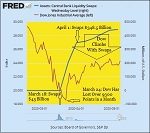
By Pam Martens and Russ Martens: May 10, 2020 ~ The Dow Jones Industrial Average rallied 455 points by the closing bell on Friday. It seemed sadistic to average folks. One hour before the stock market opened, the Bureau of Labor Statistics had reported the worst U.S. unemployment figure since the Great Depression (14.7 percent) along with the staggering loss of 20.5 million jobs in just the month of April. Within the first half hour of trading, the Dow was up more than 300 points. It then added to those gains in afternoon trading. None of the explanations offered by mainstream media to explain the incongruous stock trading were accurate. It was not because the stock market had anticipated worse or that the market was rallying because it thought the worst of the economic fallout was behind us. It was because the one emergency funding facility that the Federal Reserve … Continue reading
Fed’s Powell Tells Reporters Fed Has Only “Lending Powers” – So How Does It Own $5.5 Trillion of Securities?
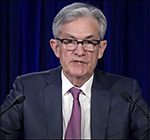
By Pam Martens and Russ Martens: April 30, 2020 ~ Fed Chairman Jerome Powell had one focus and one focus only at yesterday’s press conference. That was to come across as the epitome of prudence and law-abiding virtue. Unfortunately, the cold, hard facts on the ground keep getting in the way of that narrative. Powell first read an opening statement which included this rather remarkable statement about the trillions of dollars in emergency funding facilities that the Fed has already rolled out, or plans to roll out, to bail out Wall Street’s excesses: “Many of these programs rely on emergency lending powers that are available only in unusual circumstances such as those we find ourselves in today. We are deploying these lending powers to an unprecedented extent, enabled in large part by the financial backing and support from Congress and the Treasury…I would stress that these are lending powers and … Continue reading
Gundlach: Fed’s Corporate Bond Buying Program Is Illegal; Fed Says Program Isn’t Operational

By Pam Martens and Russ Martens: April 28, 2020 ~ “The Fed has, effectively, become a hedge fund in drag as a central bank.” When the Fed published its weekly H.4.1 data last Thursday, there was no mention of its two, highly controversial, corporate bond buying programs: the Primary Market Corporate Credit Facility (PMCCF) and the Secondary Market Corporate Credit Facility (SMCCF). We sent an email to the New York Fed to find out if the two programs are operational and if they will be consolidated on the Fed’s balance sheet. A spokesman for the New York Fed replied that “the PMCCF and SMCCF are not yet operational. And, as we note on the websites for each, additional information will be published before the facilities are launched.” That strikes us as strange. Last fall, the Fed launched a highly questionable repo loan program in as little as 24 hours and … Continue reading
Here Are the Contracts Showing How $4.5 Trillion in Stimulus Was Outsourced to Wall Street
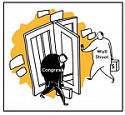
By Pam Martens and Russ Martens: April 16, 2020 ~ Bloomberg News has an article up today with the headline: “The Fed Loves Main Street as much as Wall Street This Time.” The article is accompanied with a graphic of Fed Chair Jerome Powell shooting equal amounts of money at Main Street and Wall Street. Nothing could be further from the truth. Despite the headline, the article by Peter Coy offers not a scintilla of evidence to support the premise that Main Street is getting a fair shake from the Fed. What the article does do is adopt the talking points the Fed has used in every press release it has issued on a new funding facility rollout – that the money will (through some magical and invisible and unexplained hand of the market Gods) make its way to American workers and households. It’s all bunk. Here’s what is actually … Continue reading
American Workers Get a 4-Month Safety Net; Wall Street Gets a 4 to 5-Year Bailout
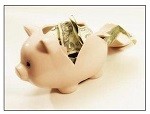
By Pam Martens and Russ Martens: April 13, 2020 ~ The stimulus bill passed by Congress and signed into law by President Trump in March, (the CARES Act), increases the miserly amount most states provide in unemployment benefits (an average of $378 weekly) by an additional $600 per week. But that extra $600 only lasts until July 31 — a period of four months. Millions of small businesses, such as restaurants and retail shops, will shut down permanently as a result of this business disruption, meaning that workers in places like Florida, the third most populous state in the U.S., will be back to their preposterously low weekly unemployment allotment of $275 per week in just four months. Let that sink in for a moment. A worker in Florida, where Republican Governor Ron DeSantis is in charge, is expected to live on $275 a week or $1100 per month, or … Continue reading
The Fed Is Killing the Two Main Functions of Wall Street: Price Discovery and Prudent Capital Allocation
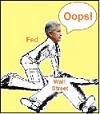
By Pam Martens and Russ Martens: April 11, 2020 ~ On Thursday, knowing that a three-day Easter weekend was coming and the attention of the public would be elsewhere, the Federal Reserve announced that it would allow two of its emergency lending programs to begin buying junk bonds. Those are bonds with less than an investment-grade credit rating, meaning they have a greater likelihood of defaulting. The Fed is not simply accepting junk bonds as collateral for loans, it will actually be buying junk bonds — potentially hundreds of billions of dollars of them. Two of the popular junk bond ETFs, iShares iBoxx High Yield Corporate Bond ETF (symbol HYG) and SPDR Bloomberg Barclays High Yield Bond ETF (symbol JNK) closed the trading day on Thursday up 6.55 and 6.71 percent, respectively, on the announcement. Those ETFs had been plunging in price for most of the month of March. For … Continue reading

